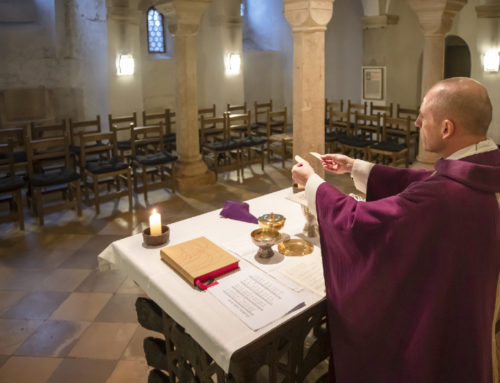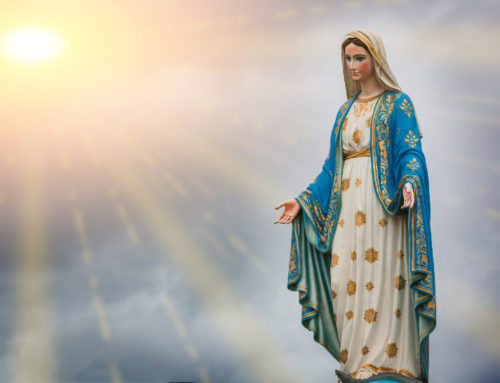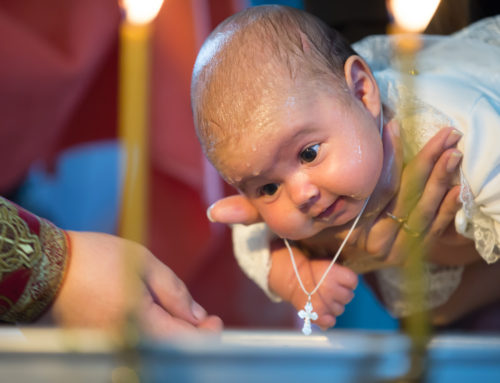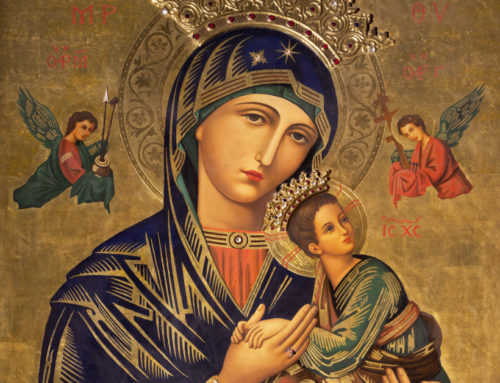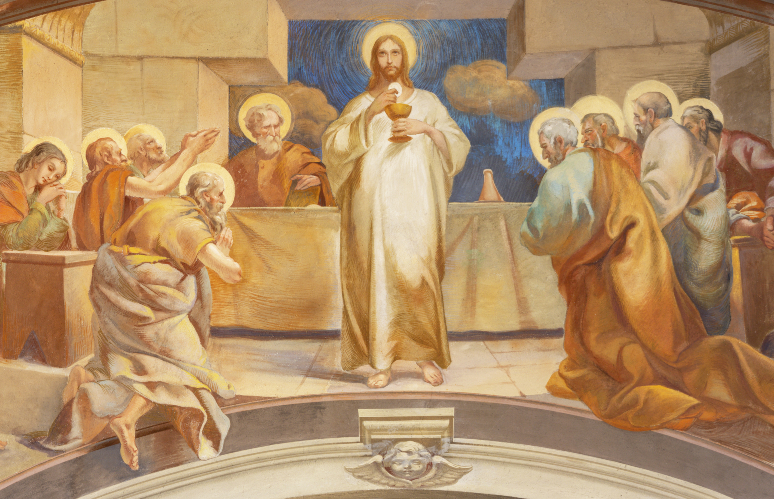
The fresco of Last Supper in church Chiesa di San Andrea Apostolo (Brunate) of by Mario Albertella (1934)
What is theosis?
Both the Latin Church and the Eastern Catholic Churches feature this idea as a central pint in their theology. what is called “theosis” in the East is called “divinization” in the West. It is the process of becoming more like God. Many of the church fathers speak of this simple truth, which is commonly attributed to Saint Athanasius (and to other church fathers such as St. Augustine): “God became man that man might become God.” Note that we do not become “a god” but, rather, are incorporated into the One God.
This is, as St. Peter tells us, “partake[ing] of the divine nature.” Theosis is that process by which we strip away all that is not of God. We do not give up our selves, for that is a precious gift from God. We are, however, to find the true self in service to God and his people and, thereby, to grow in knowledge and love of God.
The Greek word metanoia is frequently associated with theosis. The word means “a conversion, a change of heart.” Saint Paul speaks of conversion as a turning away from something and a turning toward something else. This is precisely the concept of metanoia, and it is the idea behind theosis. We turn from the things of this world – especially from sin – and turn toward God. by participating in the mysteries (sacraments) we are nourished and helped along this path so that, when we finally “fall asleep in the Lord” (in general, Eastern Catholics don’t say “die” because we don’t cease to exist, which is what that term implies), we are so much like God that we are welcomed into his presence.
What are the fasting and abstinence practices of the Eastern Catholic Churches?
As we noted in an earlier post, the Eastern Catholic Churches have more “Lenten” periods of fast than does the Latin Church. In addition, all Wednesdays and Fridays are days of abstinence (no meat). There are different traditions with regard to fasting among the different churches. First and foremost is that the guidelines for fasting are just that: guidelines! They are not designed to be followed explicitly and completely by everyone but, rather, they suggest what could be done. Eastern Catholics are expected to follow the directions given by their spiritual father (usually a priest or deacon in their parish, but it may be any learned and holy person).
Because the fasting practices are guidelines, there are two general approaches: a full fast and a modified fast. Abstinence means that we abstain from all meat (including fish), dairy products (milk, cheese, butter), eggs, wine (really, any alcoholic beverage), and even olive oil. The fasting requirement is that one does not eat solid food from midnight to noon. The law on fasting says that the first day of Great Lent is a day of fast and abstinence, all Fridays of Great Lent we abstain from meat, and Good Friday is a day of fast and abstinence. Many Eastern Catholics, however, follow a more rigid program that treats every day of Great Lent as a day of fast and abstinence, although Saturday, Sunday, and certain holy days are days when there is no fasting, and fish, wine, and olive oil are permitted. There are other compromises that may be made in discussion with one’s spiritual father.
Sometimes the question comes up about whether or not it’s a mortal sin if the fast is broken. Because these are guidelines and not hard and fast rules, the issue of mortal sin doesn’t enter into the picture. In fact, depending on why the fast was broken, even venial sin may not apply. This is also a good place to point out that the differentiation between mortal sin and venial sin really doesn’t exist in the East. Rather, all sin is seen as mortal, since all sin is offensive to God. For this reason, the East encourages confession before going to communion – even if that means weekly confession!
Excerpt from Faulk, Edward. 101 Questions and Answers on Eastern Catholic Churches. (Paulist Press: Mahwah, NJ) 2007.

